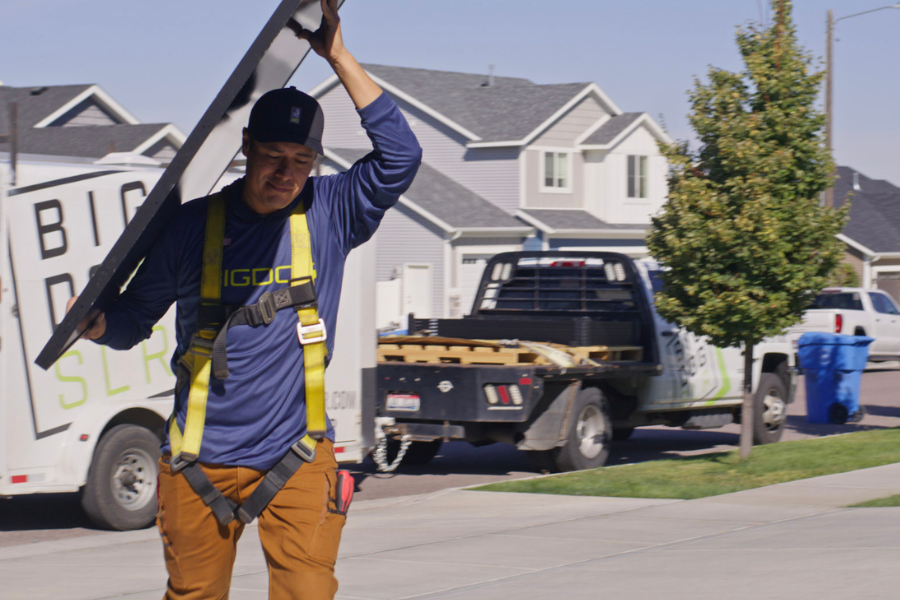Why Agricultural Solar Energy
According to the USDA’s Economic Research Service, Idaho has roughly 24,000 farms or ranches that account for its 12 million acres of farmland. That’s about three times the landmass of Connecticut. Solar energy can benefit agriculture like farms greatly.
In 2005, the average U.S. farm had to devote 6% of expenses directly to energy. Having photovoltaic (PV) panels provide solar energy can ensure “predictability, independence and even cost-effectiveness,” toward these agricultural energy needs.

Farms almost always facilitate solar energy systems well because of their warehouses, outbuildings, barns and other structures with a lot of roof space. Oftentimes, farms also contain unused plots of land perfect for housing solar energy panels. Any of these arrangements help offset the daily use of energy and electricity a farm needs to function.
Big Dog Solar’s PV panels can also address the problem of remote electricity that so many farms and ranches struggle with. PV solar panels have no moving parts and don’t run on fuel. This makes them easier to operate and maintain than installing new electric lines or gasoline generators.
The PV solar panels can help power lights, electric fences, ventilation, security, refrigeration and certain irrigation or water pumping systems. PV systems can be more economical than traditional remote electricity systems in as little as a 50-foot distance from a power source.
The U.S. Department of Agriculture offers grants and loans that farmers, rural businesses and agricultural producers can apply for to help install renewable energy systems, such as solar paneling.
Joel Baxley, Acting Assistant to the Secretary for Rural Development, made this statement in July 2019: “Under the leadership of President Trump and Agriculture Secretary Perdue, USDA is committed to increasing economic development in rural communities across the country through strong partnerships with rural businesses. USDA’s Rural Energy for America Program (REAP) is an important tool to help strengthen and grow the rural economy.”
Related post: Solar Saves Money | Smart Choices by Going Solar
Frequently Asked Questions
How can solar energy benefit farms?
Solar energy can provide farms with predictability, independence, and cost-effectiveness in their energy needs. It helps offset energy costs and is well-suited for the large roof spaces and unused land on farms.
Why are farms ideal for solar panel installations?
Farms often have ample roof space on structures like barns and warehouses, as well as unused plots of land, making them ideal for installing solar panels. This setup helps meet the daily energy needs of a farm.
How do solar panels help with remote electricity needs?
Solar panels can address remote electricity issues by providing power without the need for fuel or extensive infrastructure. They are easy to operate and maintain compared to traditional electric lines or generators.
Are there financial incentives for farmers to install solar panels?
Yes, the U.S. Department of Agriculture offers grants and loans through the Rural Energy for America Program (REAP) to help farmers and rural businesses install renewable energy systems like solar panels.




.png)








